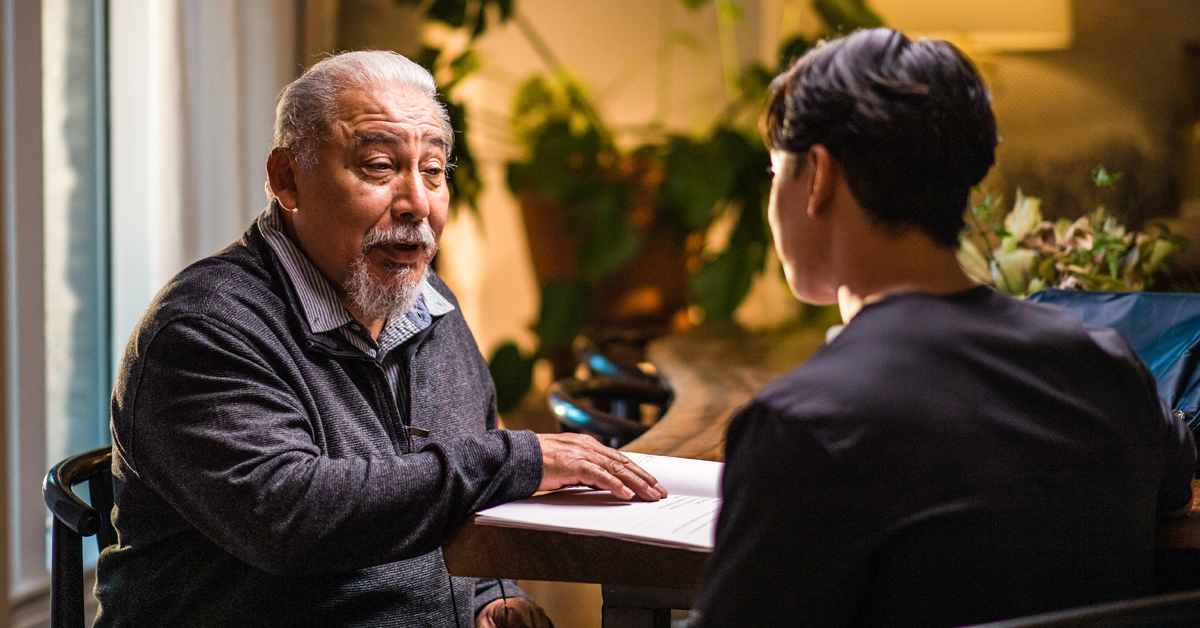“We wish we would’ve known about hospice care sooner.”
That’s a common statement hospice agencies across the country hear from the families of former hospice patients. In fact, over half of hospice patients are only in hospice for 30 days or less, according to the National Hospice and Palliative Care Organization.
In order for a patient to qualify for hospice care, they must have a physician certify that their life expectancy is six months or less, and the patient must choose a non-curative treatment plan for their terminal illness. However, even if the life expectancy measure ranges on the six months side, it might be time to talk to your patients about hospice.
“Physicians will sometimes wait until a patient is closer to a life expectancy of one or two months to bring up hospice,” said Carleen, hospice admissions specialist at Enhabit Home Health & Hospice. “While that is understandable because the topic is hard to broach, it is essential to introduce hospice as soon as you start seeing declines. This way, the patient and family feel well-informed about their available options.”
As a physician, it is important to recognize the early signs that a patient may benefit from hospice care and know when the right time is to bring up the hospice conversation. Starting that conversation early means the patient and their loved ones could get more quality time together. And ultimately, the patient could experience a higher quality of life during their last months.
Furthermore, more than 60% of Americans have little to no knowledge about hospice care. Introducing the topic could help them learn more about options they didn’t even know they had.
If you have determined your patient has a prognosis of six months or less, and you are seeing any of the following signs, it might be time to talk to your patient about hospice.
Talk to your patient about hospice if:
Your patient is experiencing no relief from treatment
Treatment for various diseases can be hard on a patient but the goal of these treatments is to provide more positive results and relief from symptoms. If your patient has been undergoing treatment for quite some time and the negative effects are outweighing the positive, it might be time to discuss options outside of continuing treatment.
“You’ve got to look at the risk versus the benefit and determine do they need to continue those treatments or medications,” Vice President of Pharmacy Operations Ly Dang said. “Our goal in hospice is to minimize their symptoms while maximizing their comfort and quality of life.”
Continuing interventions that are intense and disadvantageous result in patients losing quality time with their loved ones. It can potentially increase their time spent in hospitals as well.
Bringing up hospice care early can help patients and their families have time to reflect. Then, they can decide on what is most important to them.
Your patient is having frequent visits to the hospital
The majority of Americans desire dying at home surrounded by their loved ones. However, less than 25% of Americans actually spend their last moments at home, according to the Centers for Disease Control and Prevention (CDC). Most Americans die in hospitals or another medical setting.
If your patient is frequently needing emergent care, hospice can diminish the number of trips to the hospital. This guarantees more time at home.
“Although it is common to spend more time in medical institutions as you age, having to go frequently and for small things is a sign of declining health,” Carleen said. “Hospice services can ensure your basic needs are met and you are receiving the care you deserve where you are most comfortable.”
Your patient has a noticeable and rapid decline in physical or mental capabilities
When the body starts to decline, it stops craving food and drink as a healthy body would. The same goes for mental and social actions such as talking less, withdrawing and becoming confused or restless.
Hospice can help patients who are in this stage maintain their comfort, while adhering to their wants and wishes. For example, a patient that is refusing water may be offered ice chips to prevent dry mouth. Or a patient refusing to eat their dinner can be given nutritional shakes or popsicles as a substitute.
As mental capabilities decline, comfort measures can be taken to limit stimulation. This includes speaking softly or playing low soft music.
Other measures might be gently massaging the forehead, hands or feet and using anti-anxiety medications to provide relief from the confusion or restlessness. The ultimate goal in hospice is for patients to be comfortable and dignified as they transition into the end of life.
Your patient is losing hope about treatment
It’s possible your patient could be getting tired of the intensity of treatment. Or they might feel obligated to continue treatment.
It is common too that families’ wishes influence patients. Families often wait too long to talk about hospice because it is a hard and sad reality.
“Ensuring patients and loved ones have a full understanding of what hospice is remains crucial,” Carleen said. “There are still many people who believe false things about hospice. Common myths include thinking the choice to pursue hospice is permanent or that it signifies that one has given up hope on life. This is not the case and we have to make sure all patients and loved ones understand the benefits that hospice could bring.”
How to talk to your patient about hospice
Hospice is a hard subject for many people because just hearing the word might trigger fear of death or dying.
When talking about hospice, ease gently into the conversation, explaining that the patient is not about to die right away. Instead, share all the benefits for the patient and their loved ones if they begin hospice now.
It’s important to remind the patient’s loved ones that not only does hospice care help the patient receive a quality end-of-life experience, it also provides bereavement resources for loved ones for up to 13 months after the patient’s passing.
Although a tough conversation to have, there are a few things you can keep in mind to make the experience easier on you, the patient and their loved ones.
- Let the patient’s health and needs take priority.
- Explore the family’s perception of hospice and dispel any misconceptions they may have.
- Be understanding of culture and background.
- Explain the Medicare hospice benefit.
- Remind patients that they can stop hospice care anytime they wish.
- Be respectful, patient and willing to listen.
Enhabit Home Health & Hospice is one of the nation’s largest Medicare-certified hospice providers. Visit our website to learn more about Enhabit’s hospice services.
Social Share
At Enhabit our patients are our number one priority. From providing the latest medical practices to building deep personal connections, we’re focused on upholding every patient’s dignity, humanity and sense of control on their health care journey.
Home health
Our home health services give patients access to the care they deserve in the comfort of their own homes. From disease and injury management to recovery from surgery, our clinicians help patients confidently achieve their healthcare goals.
Hospice care
Our hospice care services place importance on the comfort of every patient living with a terminal illness. Our caring professionals are dedicated to providing not just physical care, but spiritual and emotional support to every patient and their loved ones.

 Back to Resource library
Back to Resource library




